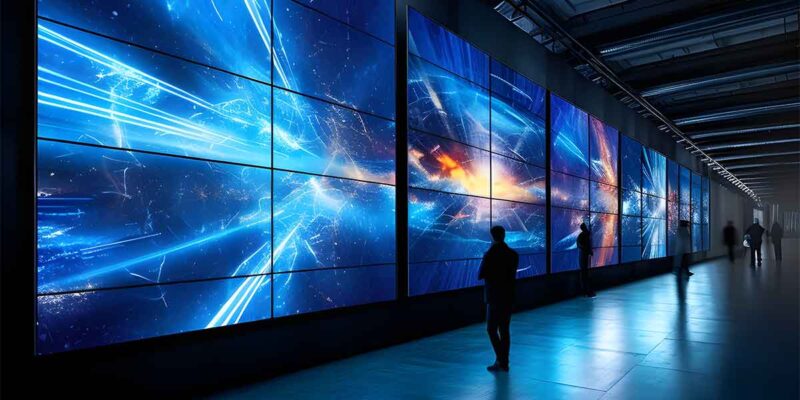More Than One in Five US Classrooms Now Has a Non-interactive Flat Panel Display

By Chris Pennell
Futuresource Consulting
K-12 schools across the USA are investing in non-interactive and flat panel displays, presenting new opportunities for vendors. As AV display installations sweep through classrooms and schools’ public spaces, a new EdTech AV report from Futuresource Consulting shows that, in 2021, 16% of school rooms had a non-interactive flat panel or TV. This year, the specialist research firm expects that number to grow to 21%.
The Futuresource study is based on interviews with curriculum leaders within 404 school districts across all 50 US states. It explores current and future developments surrounding the uptake of projectors, microphones, video conferencing solutions, video cameras, interactive flat panels, TVs, visualisers, screen casting solutions, and more, with forecasts out to 2024.
New Streamlined Purchasing Procedures
“This year, we’ve seen a critical shift in the AV decision making process,” says Chris Pennell, Principal Analyst, Futuresource Consulting. “There used to be several positions at district and school level, including the board of governors, that held influence over procurement. This made decisions convoluted and full of complexity. Thankfully, we’re now hearing that Technology Directors, CTOs and CIOs are exerting the most authority, as well as emerging as the final decision makers.
“Alongside this step change, we’re also seeing a channel shift. Previously, two-thirds of schools used an IT reseller or online specialist to procure AV equipment. Now, that’s dropped to less than half of all schools. Plus, the percentage of schools going direct to manufacturers or OEMs has almost doubled, rising from 13% in 2021 to 25% in 2022.”
Classroom Cameras on the Rise
In line with the rising demand for display and audio devices, schools are also equipping rooms with cameras. According to Futuresource research, 19% of rooms currently have a video camera installed. The most frequently mentioned reason for installation was to record classroom activities and communicate with students. However, not only do these cameras provide teachers with a record of student activities for absentees or for catch-up activities, but they are also increasingly used for teacher training and safety.
AV Obstacles, Equipment Problems and Purchase Barriers
“Despite all this positivity, with many schools riding an AV growth curve, we’re still hearing about problems with AV equipment,” says Pennell. “In 2021, on average, 85% of AV devices were operational less than 50% of the time. In 2022, the number of devices that are functioning for less than 50% of the time has grown to 88%. Common challenges include slow start-up, problems accessing content, and issues with the display surface itself. Yet this is not the biggest AV obstacle presenting itself to schools.
“For schools to deploy strategies and enact planned expenditures, they rely on suppliers and their abilities to fulfil procurement needs. In 2022, supply issues are the main challenge facing schools, with 12% of respondents telling us this is the biggest barrier preventing them from adopting AV devices.”
A Bright AV Future
“The almost insurmountable scale of the COVID-19 pandemic has left its mark on schools across the United States, and on the education of children of all ages,” says Pennell. “Pedagogy was disrupted for more than 50 million K-12 learners, and districts have been forced to rely on technology to deliver education to these children like never before. Now, as the dust settles, we’re seeing a new technological emergence that, if managed correctly, can only improve the outlook for the AV industry.”




